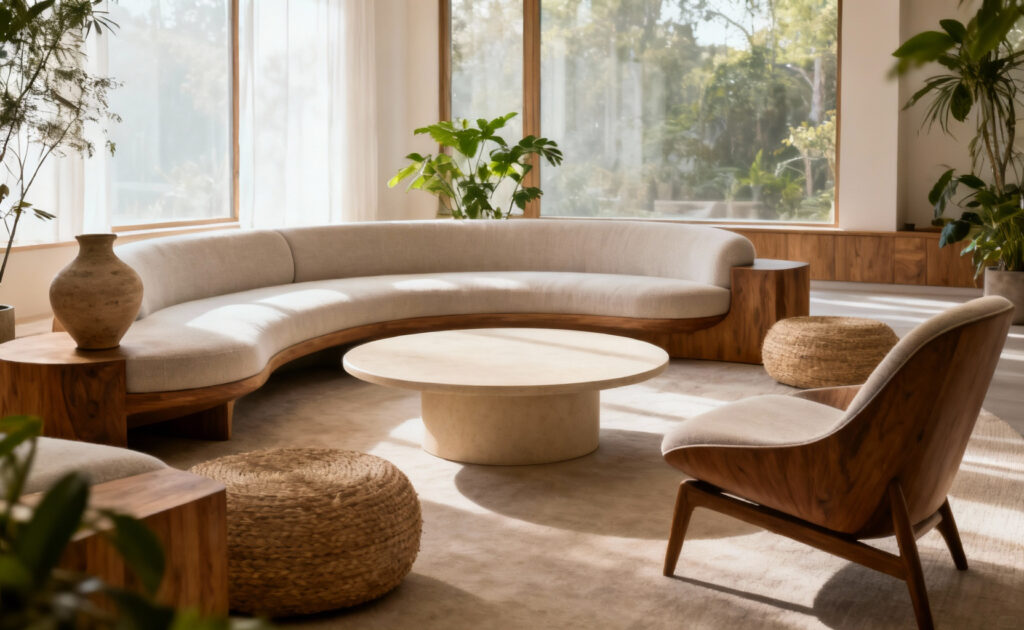To design a home is to engage in a quiet act of self-revelation. Every choice we make reflects not just an aesthetic preference, but our deeper values about how life should be lived—its rhythms, its connections, its moments of sacred pause. The most compelling interiors are never simply decorated; they are authored, telling a coherent story of who we are and who we hope to become. These spaces understand that beauty’s true role is in the gentle support of our daily lives.
In my work as a wellness design consultant, I guide people to see ‘living room furniture inspiration’ through a more holistic lens, exploring the unseen influences that shape our experience of a space. True harmony isn’t found in a catalog, but in crafting an environment that actively nurtures our physical and mental well-being. These 12 principles move beyond fleeting trends to help you create a living room that feels like a true sanctuary—a space that anchors you, restores you, and allows you to live more gracefully.
Cultivating Intentionality: The Foundation of a Harmonious Space
The journey toward a living room that genuinely nurtures begins with a gentle shift in perspective. It begins with intention. This is about more than just what looks good; it’s about understanding how the form, function, and very story of each piece contributes to the room’s energy and our own sense of peace. Here, we explore the foundational principles that transform a collection of furniture into a haven of well-being.
1. Understanding the Energetic Resonance of Form and Function
Every piece of furniture we bring into our home carries a subtle energy, an unspoken influence that shapes the atmosphere of the room and, in turn, our emotional state. To choose with intention means looking beyond aesthetics to understand this resonance—how a piece’s form, its materials, and its scale harmonize with the tranquility we seek to cultivate.
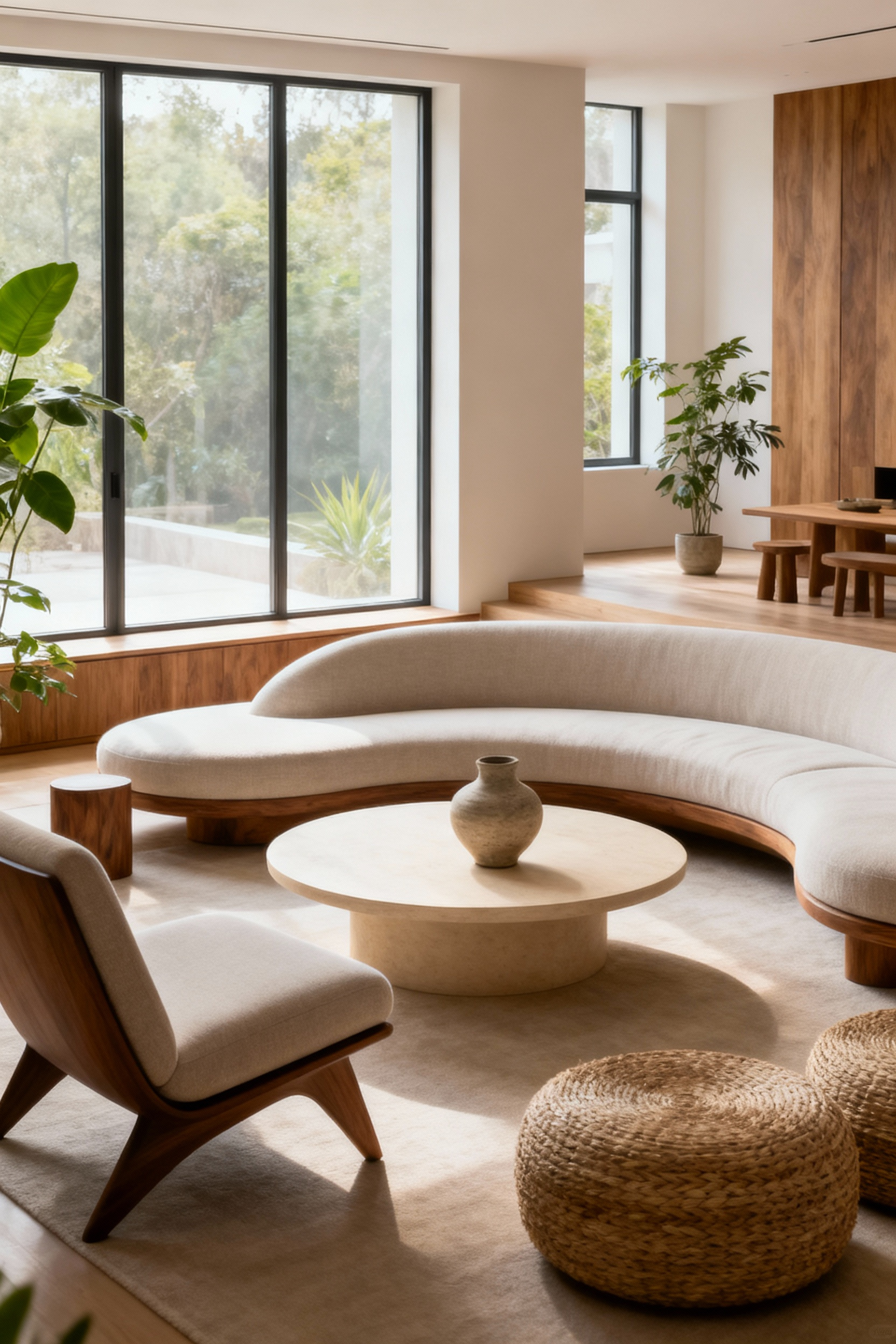
This gentle curation moves past trends and toward pieces that actively support psychological comfort. Soft, curved forms, for instance, often evoke feelings of safety and calm, as environmental psychologist Dr. Sally Augustin has noted, while sharp angles can create a sense of alertness. In my wellness design practice, I’ve seen this play out time and again. Simply replacing a hard-edged, rectangular coffee table with a softer, round one has palpably shifted a room’s energy, encouraging family members to linger and connect in a more relaxed way. This isn’t just theory; it’s a felt experience, supported by research showing that exposure to natural materials and organic shapes can measurably reduce stress.
2. Architecting Tranquility with Biophilic Design
Biophilia is the simple truth that we possess an innate need to connect with nature. When we invite organic, curvilinear forms into our living room furniture, we create a powerful bridge to the natural world. This practice moves beyond simply adding a houseplant; it’s about echoing the serene, flowing lines of a landscape to calm our nervous system and provide a gentle refuge from the angularity of modern life.
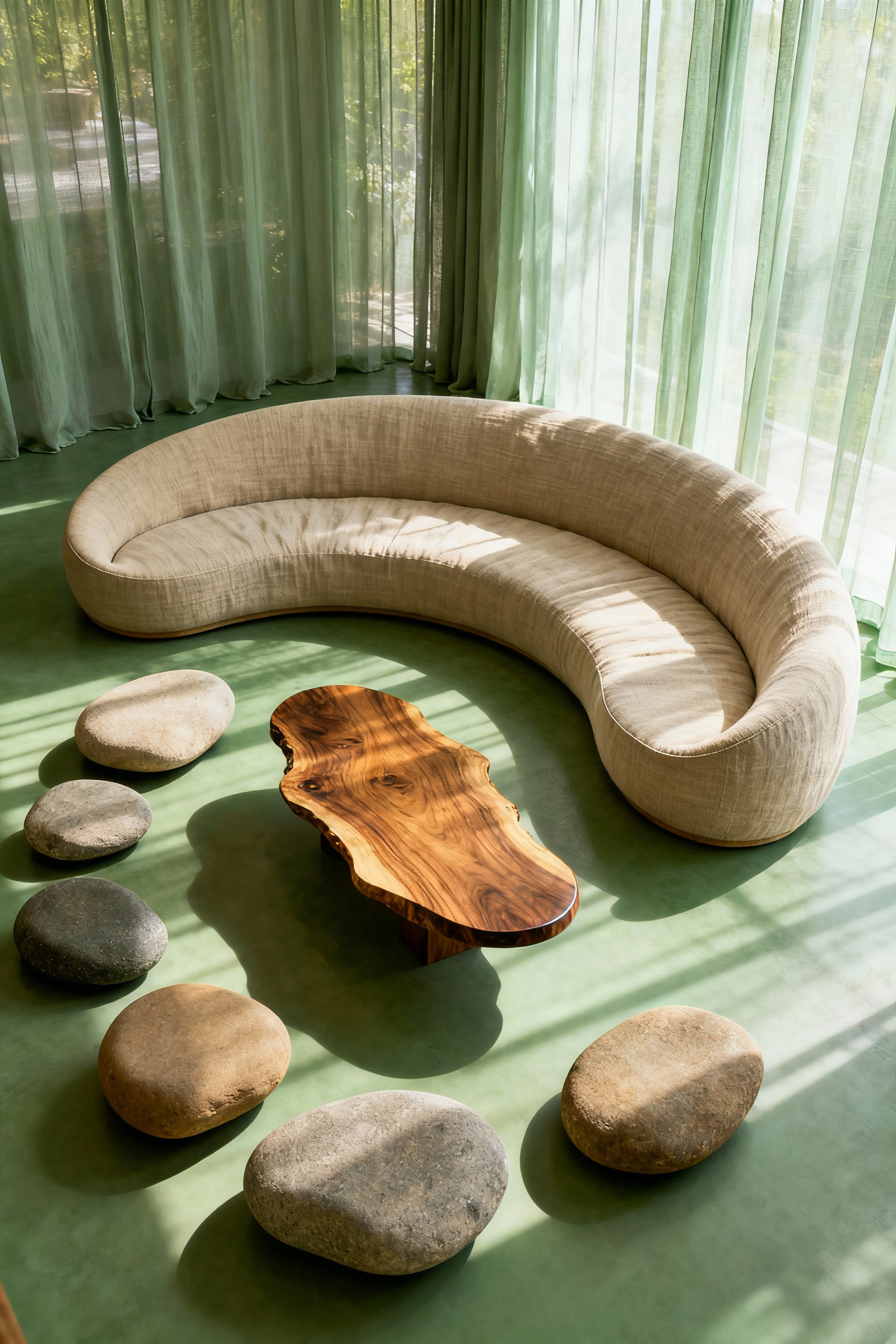
Consider sofas with soft edges, armchairs with gentle slopes, or coffee tables that mimic the shape of a river stone. These forms foster a sense of safety and ease, allowing our minds and bodies to relax more deeply. A cornerstone of my approach to Healthy Home Materials involves prioritizing sustainably sourced woods and natural fibers like linen or wool, which ground a space and provide a rich sensory experience. The goal is to create a living room that feels less constructed and more grown—an environment that serves as a tangible, restorative link to the world outside our walls.
3. Weaving Your Personal Narrative into Your Space
Your living room should be a reflection of your own story. When we curate our furniture with this in mind, the pieces we choose become more than functional objects; they become emotional anchors that foster a deep sense of belonging, identity, and security. Infusing your space with meaning is what transforms a house into a truly soulful home.
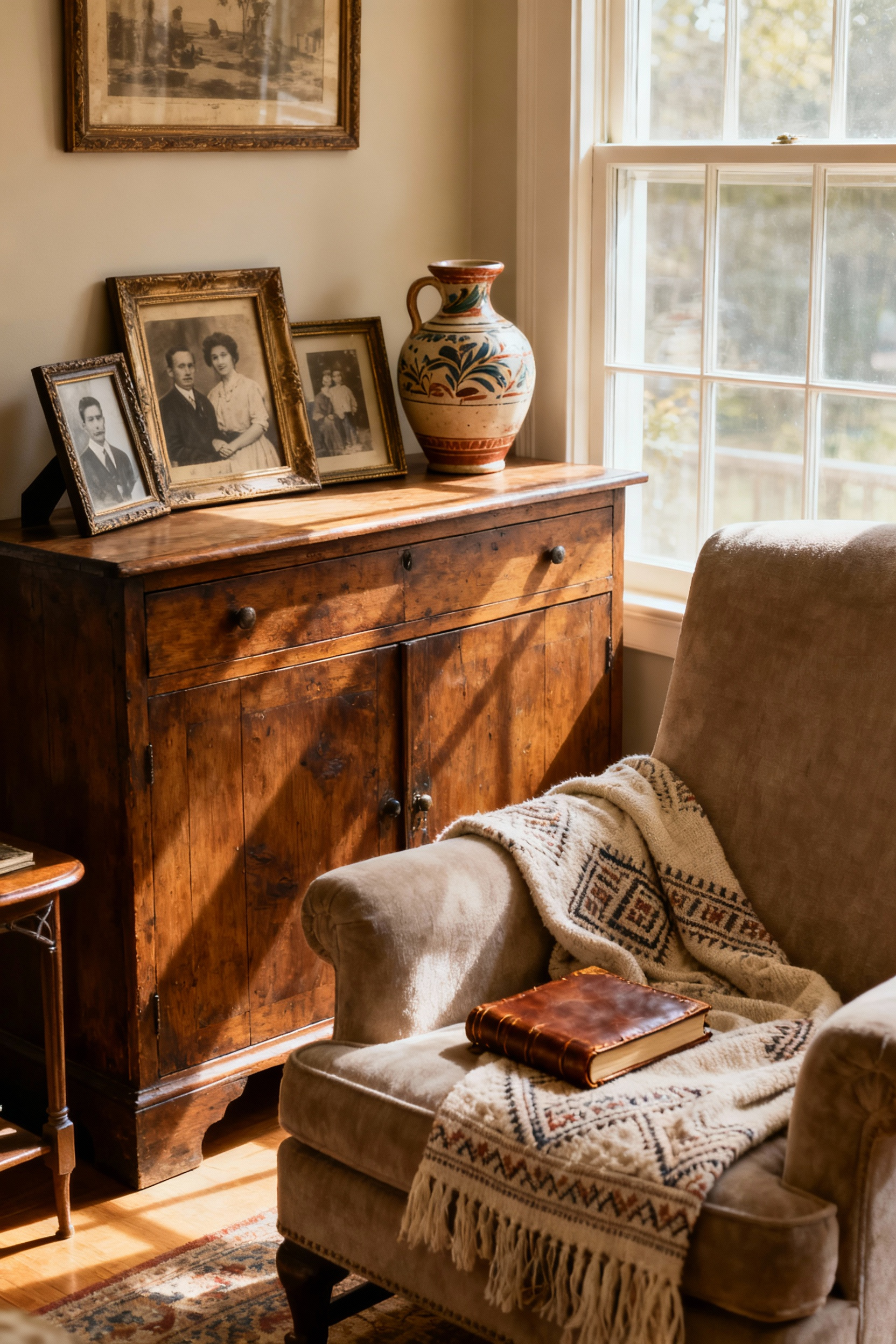
Begin by reflecting on your own journey. What memories, relationships, and values define you? Let these personal tenets guide your curation. Perhaps it’s a beautifully worn armchair from a grandparent or a custom bookshelf built to hold a lifetime of treasured books. Years of mindful space planning taught me that these objects hold our stories. I once worked with a client who felt adrift after a move, and we found that by placing a small, inherited writing desk in a place of honor, her entire living room transformed. It became a space of continuity and comfort, anchoring her in her own history. Your home can, and should, be your most personal and resonant memoir.
4. The Art of the Pause: Integrating Negative Space for Clarity
Negative space—the quiet, unoccupied areas between your furniture—is one of the most powerful and often overlooked elements in design. It is not emptiness, but rather breathing room. A deliberate integration of this space is essential for preventing visual clutter, allowing both the eye and the mind to rest, and cultivating a profound sense of calm.
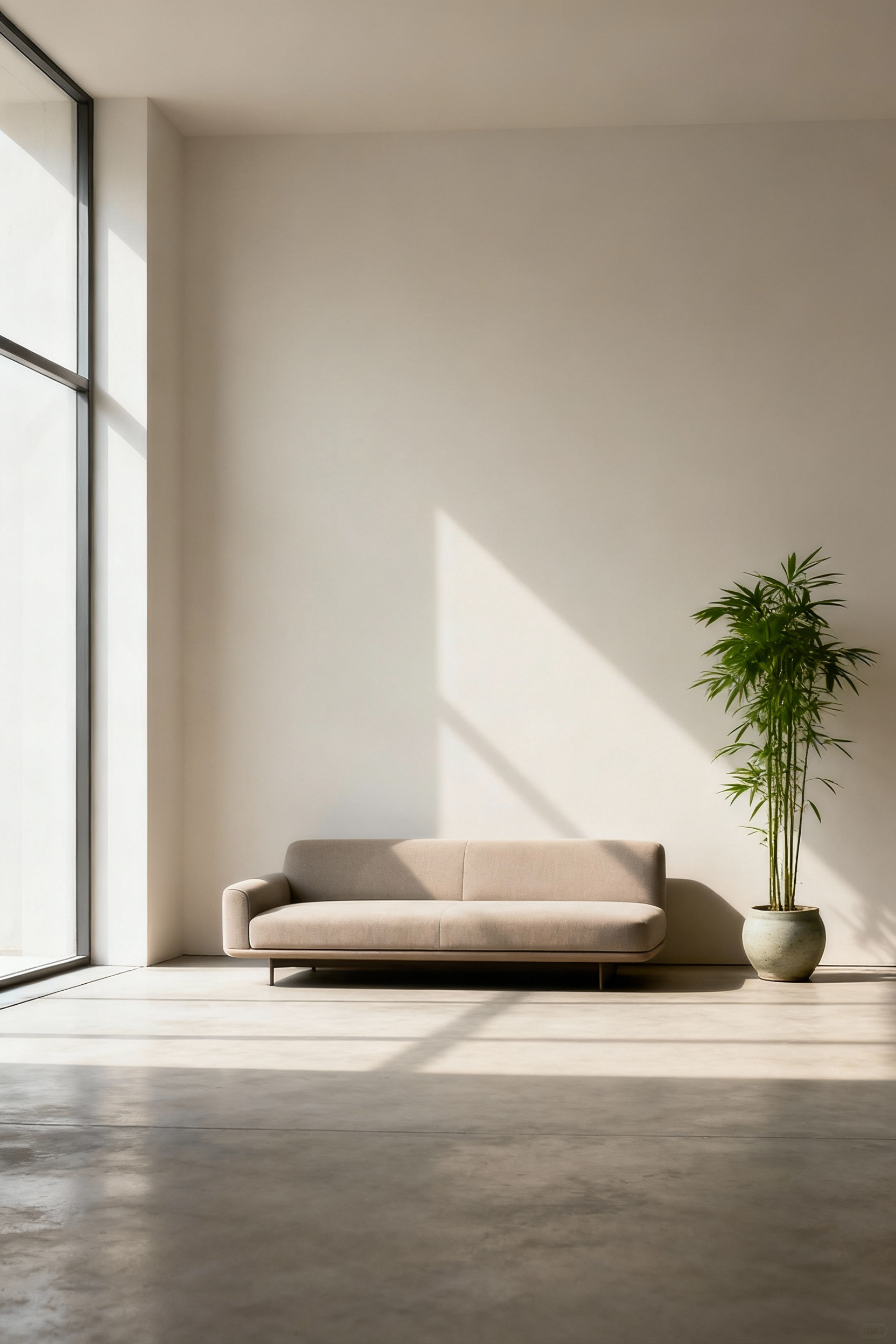
A room filled to its edges can feel chaotic and mentally taxing. By contrast, embracing these open areas reduces our cognitive load and creates a sense of expansiveness and peace. In my work, I often guide clients to perform a ‘breathing room assessment.’ We look for areas where furniture feels too dense and experiment with creating more generous gaps. You might consider the principle of ‘fewer, more resonant pieces’ over a multitude of smaller ones. This simple act of subtraction allows the pieces you truly love to shine while fostering unimpeded movement and a feeling of psychological freedom. See these open areas not as a lack, but as an invitation to pause and just be.
5. Embracing Wabi-Sabi: The Beauty of Imperfection
In a world that often demands perfection, the Japanese philosophy of Wabi-Sabi offers a gentle and profound alternative. It is the practice of finding beauty in the imperfect, the transient, and the gracefully aged. Applying this principle to your living room furniture cultivates a space with soulful depth, authentic character, and a grounding connection to the natural passage of time.
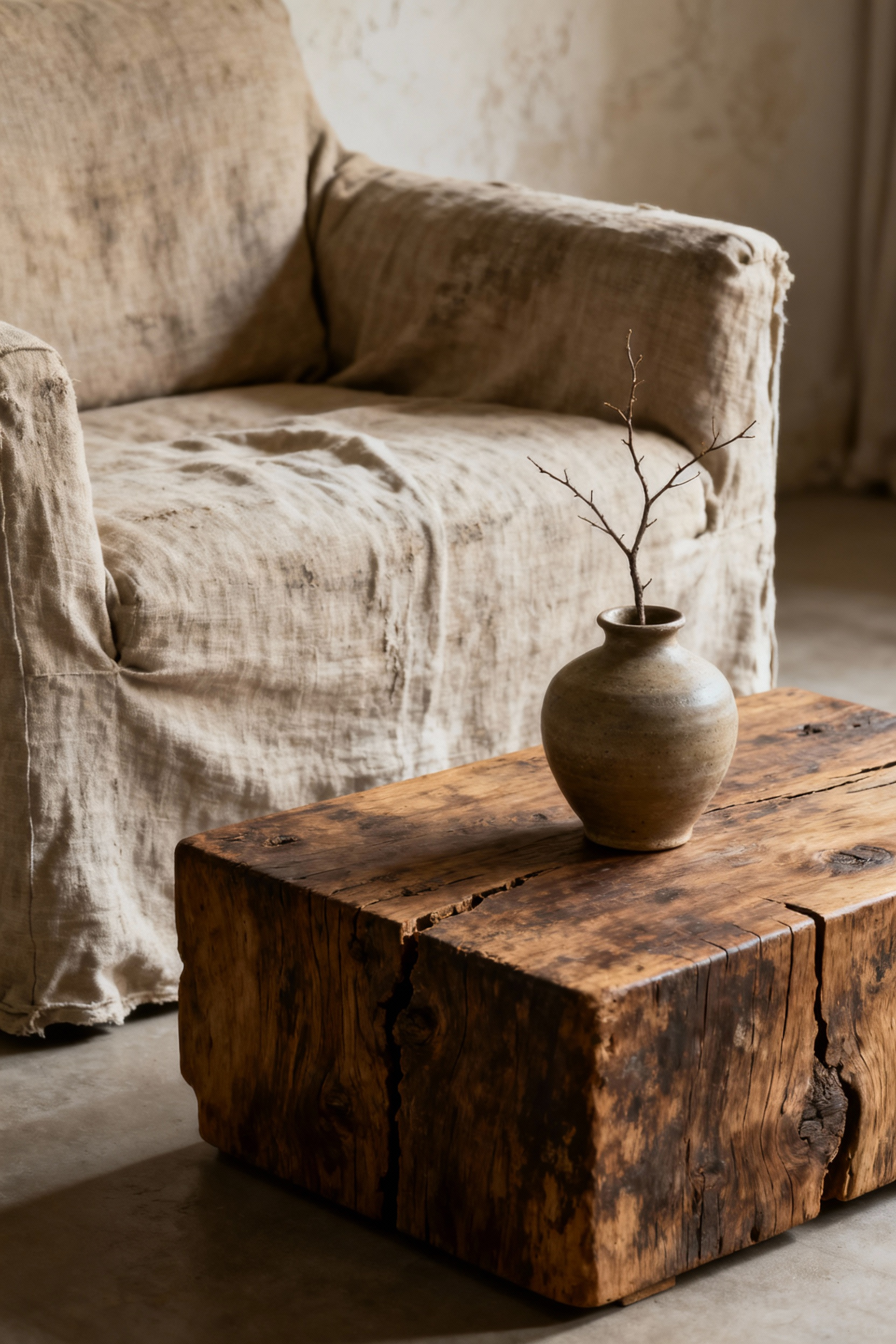
This isn’t about choosing things that are simply old or shabby, but about appreciating the story that an object tells through its patina and wear. Prioritize furniture made from natural, unrefined materials—reclaimed wood with its unique grain, linen that softens with use, hand-thrown ceramics with their subtle irregularities. A coffee table carved from a single slab of wood, fissures and all, brings a quiet humility to a room that a factory-perfect piece never could. In my experience, spaces that embrace Wabi-Sabi principles encourage us to slow down. They give us permission to be authentic and create an environment that feels deeply, reassuringly real.
6. Harmonizing with Feng Shui: Optimizing Energy Flow
At its heart, Feng Shui is the ancient art of arranging our environment to optimize the flow of ‘Chi,’ or vital life force. When applied thoughtfully to living room furniture, it helps create a space that feels not just beautiful, but balanced and energetically supportive. It can profoundly enhance our well-being and encourage positive connections with those we share our home with.
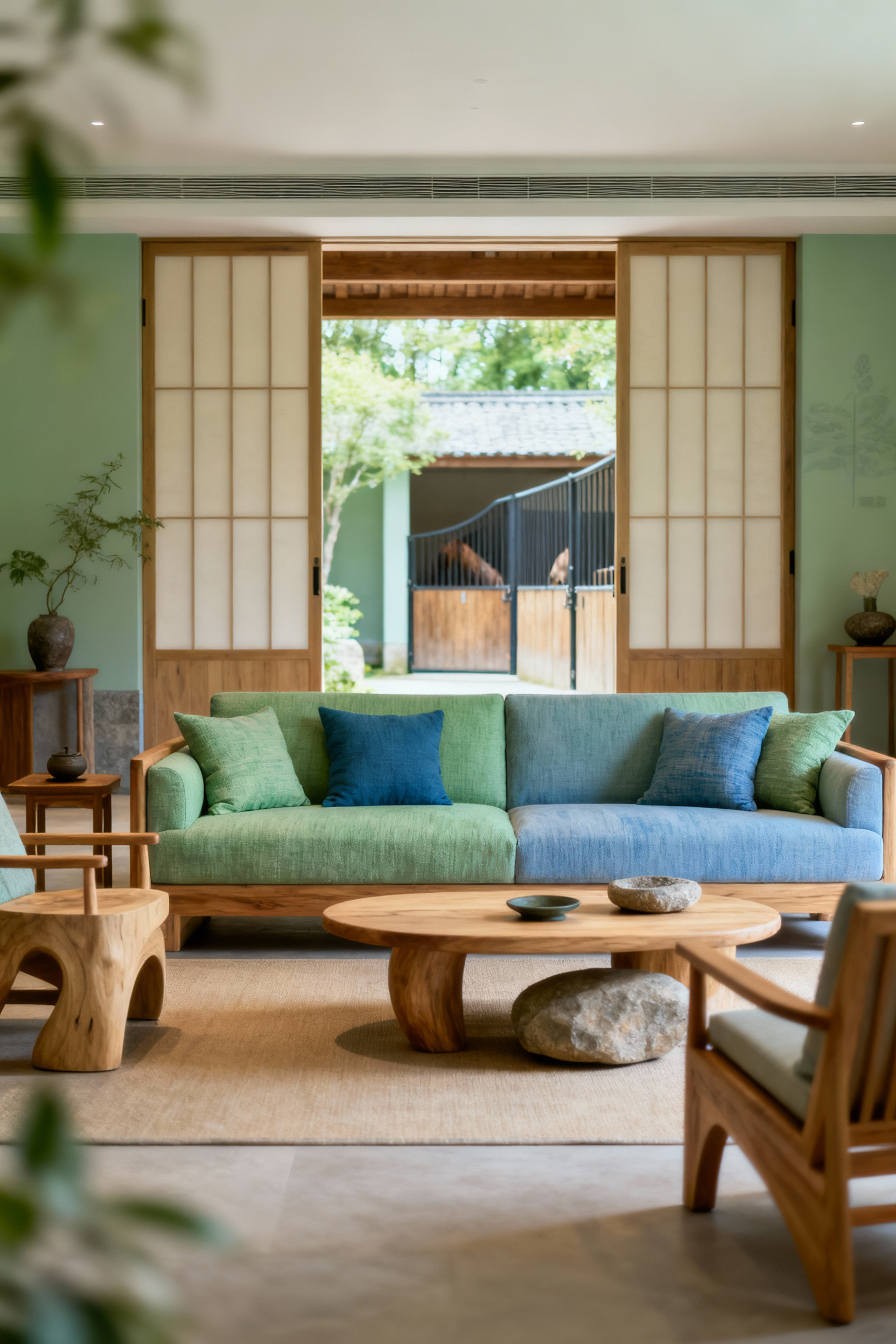
A core tenet is the ‘commanding position,’ which suggests that your primary seating should allow you to see the door without being directly in line with it. This creates a subconscious sense of security and ease. Clear, unobstructed pathways are also vital, as they allow energy to circulate freely, preventing feelings of stagnation. What I find most powerful about these principles is their intuitive rightness. I’ve seen firsthand how repositioning a sofa or clearing a cluttered corner can tangibly shift the dynamics in a room, making conversation flow more easily and helping family members feel more at peace. This is about creating a space that doesn’t just contain life, but actively supports its vitality.
Elemental Dialogues: Crafting Tactile, Sensory Experiences
A truly harmonious living room speaks to more than just our eyes; it engages our sense of touch, our awareness of light, and even our experience of sound. This is about crafting a rich, multi-sensory dialogue through the intentional choice of materials. By orchestrating a symphony of natural textures, reflective surfaces, and grounding elements, we can create an environment that soothes, invigorates, and transforms your space into a deeply felt sanctuary.
7. Layering Textures: Weaving a Rich Upholstery Tapestry
The deliberate layering of varied textures can transform a living room from a flat, visual-only experience into a resonant, multisensory sanctuary. Engaging our sense of touch with inviting and supportive surfaces is crucial for grounding us in our environment and cultivating a sense of deep comfort and harmony.
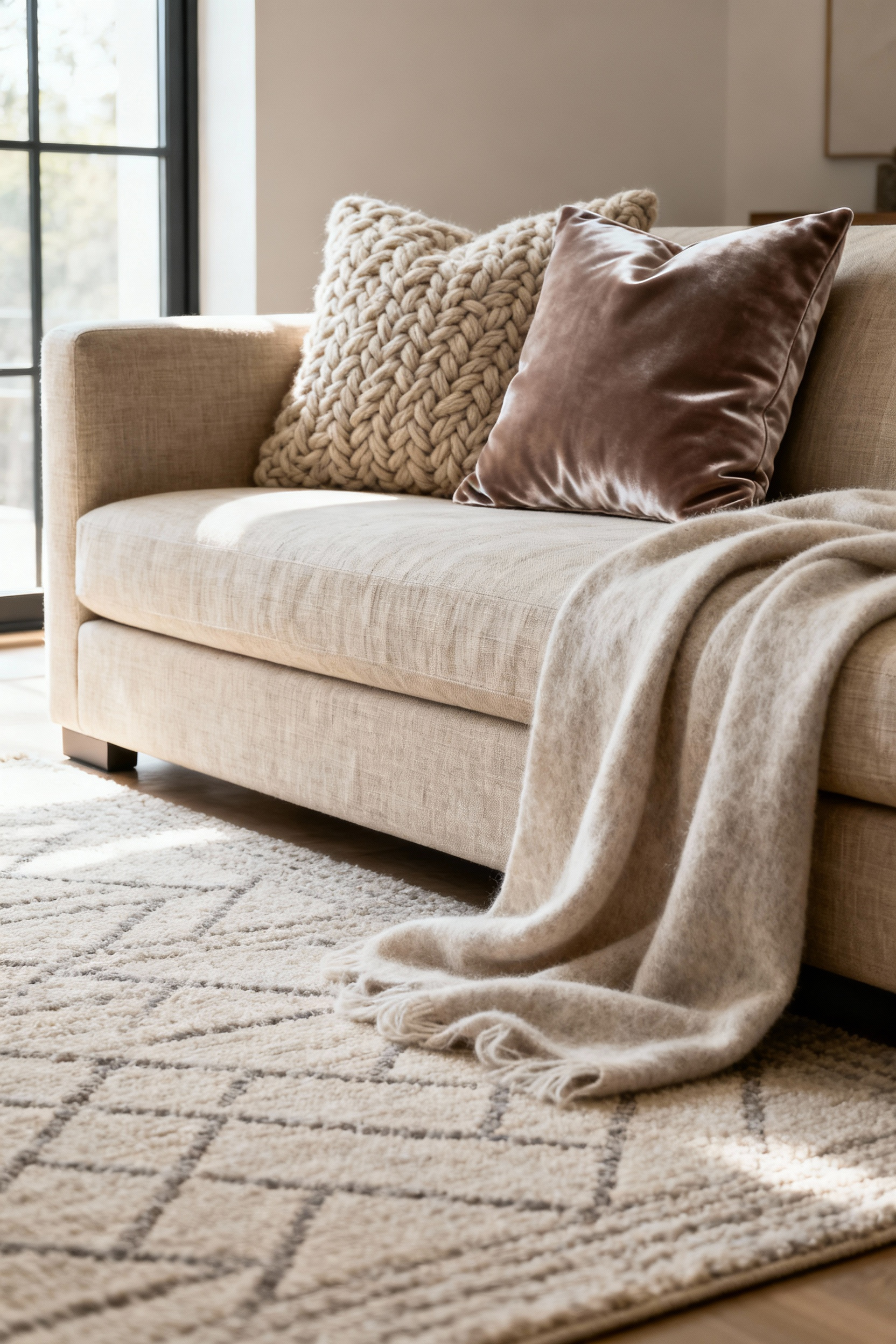
Begin with a foundational texture for your largest piece, like a sofa upholstered in a natural fiber such as breathable linen or soft bouclé. From there, introduce complementary layers—a chunky knit throw, a smooth velvet cushion, a nubby wool accent chair. This creates a dynamic tactile contrast that is both visually and physically inviting. What I’ve learned from my work with Healthy Home Materials is that the feel of things matters immensely to our sense of well-being. A rich haptic experience offers our nervous system vital feedback, anchoring us in the present moment and subtly communicating safety and care. Your living room should be a feast for the senses, inviting you to touch, feel, and truly inhabit your space.
8. The Ethereal Allure of Transparent Elements
Transparent furniture, crafted from materials like glass or acrylic, has a unique ability to create a feeling of visual lightness and expansive flow. Integrating these elements is a beautiful way to cultivate an uncluttered, airy ambiance that enhances mental clarity and allows natural light to move more freely through your space.
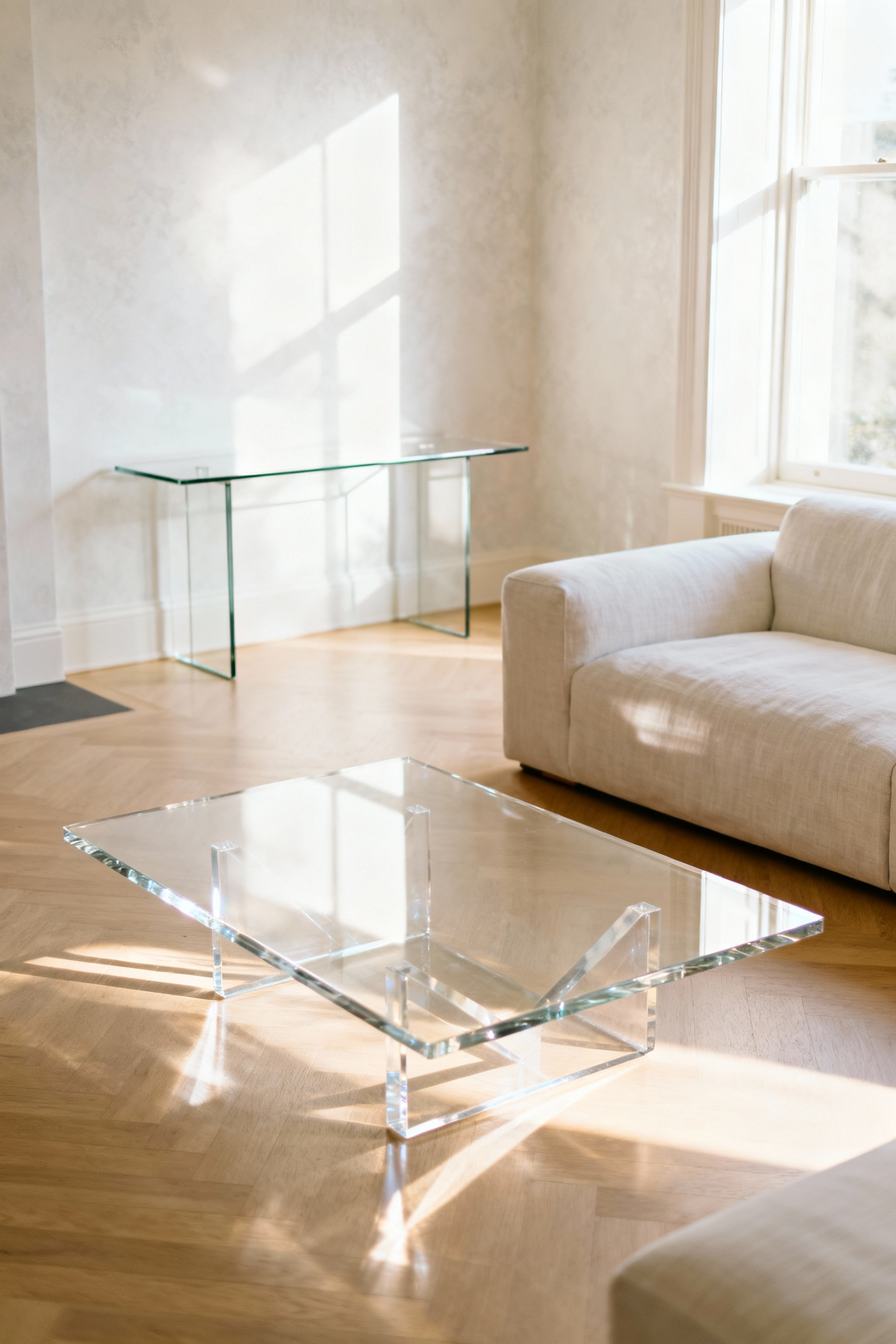
A transparent coffee table can define a conversational area without creating a heavy visual barrier, keeping sightlines open and fostering connection. Similarly, an acrylic console table against a wall can provide function while allowing the color or texture behind it to remain the focus. In my mindful space planning, particularly in smaller homes, I often turn to these materials. They can make a compact room feel grander and more serene, diminishing any sense of confinement. It’s a wonderful strategy for creating a feeling of boundless space, mirroring the tranquil, open horizons we find in nature.
9. Grounding with Earth’s Bounty: Stone and Solid Timber
There is a profound sense of grounding and tranquil permanence that comes from bringing stone and solid timber into our homes. These elemental materials anchor a space, offering a tangible connection to the stability and organic beauty of the natural world and enriching our home with a deep, quiet strength.
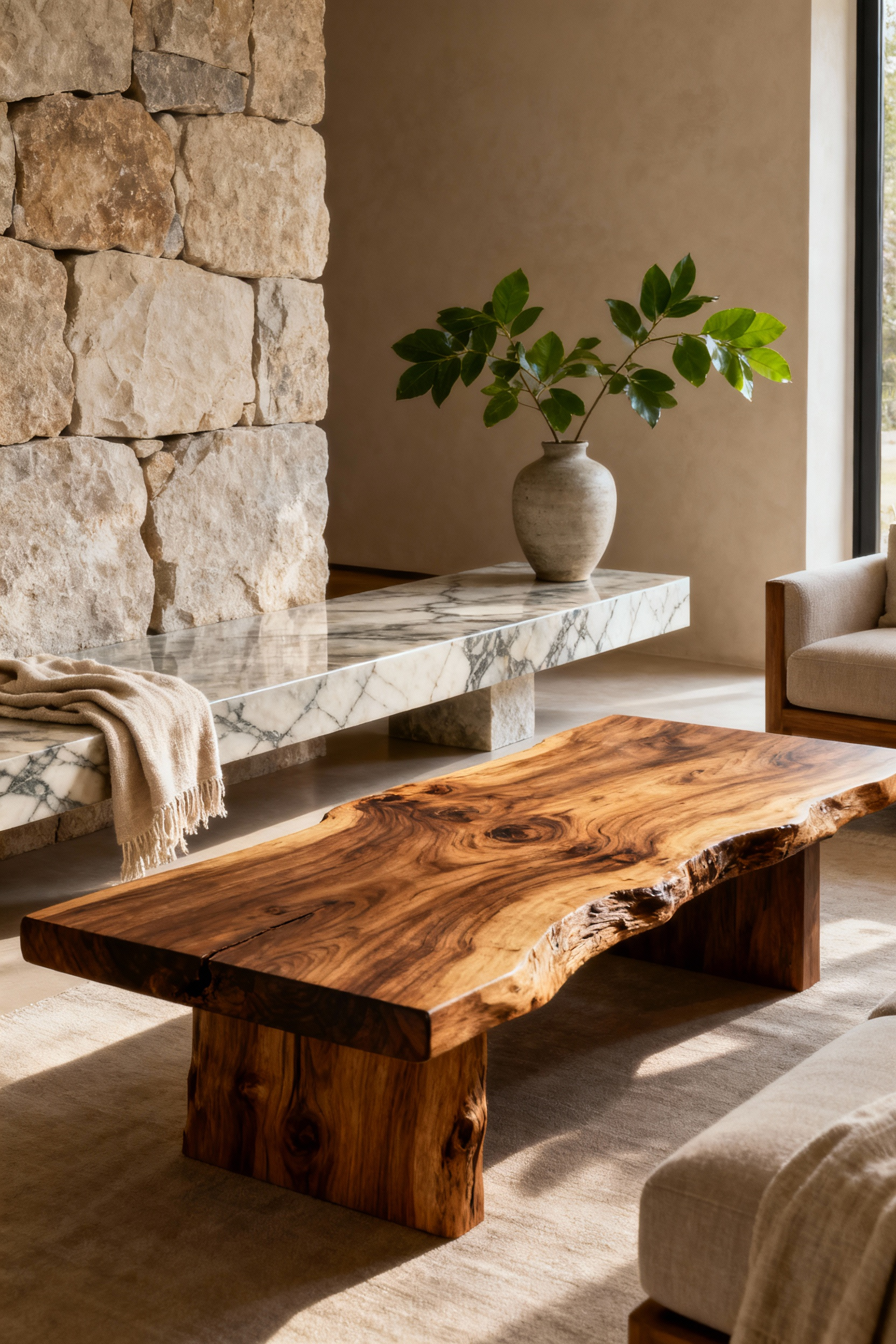
A solid timber console or a stone coffee table can serve as a powerful ‘anchor’ piece, defining a zone while contributing to a balanced and stable energy. Prioritizing pieces with minimal finishes allows the raw, tactile integrity of the material to come through, enhancing the sensory experience and connecting us more deeply to its origins. When designing, I find these natural materials offer an essential counterpoint to the softer elements in a room. Their weight and substance provide a feeling of security and rootedness that helps us feel more centered in an often-chaotic world, transforming furniture into a source of enduring serenity.
10. Infusing Warmth with the Glow of Metallic Accents
Metallic accents are so much more than simple decoration; they are instruments for capturing and diffusing light. When used with intention, finishes like brushed brass, warm copper, or soft gold can interact with the light in a room to create a gentle, ambient glow that cultivates a profound sense of warmth and invitation.
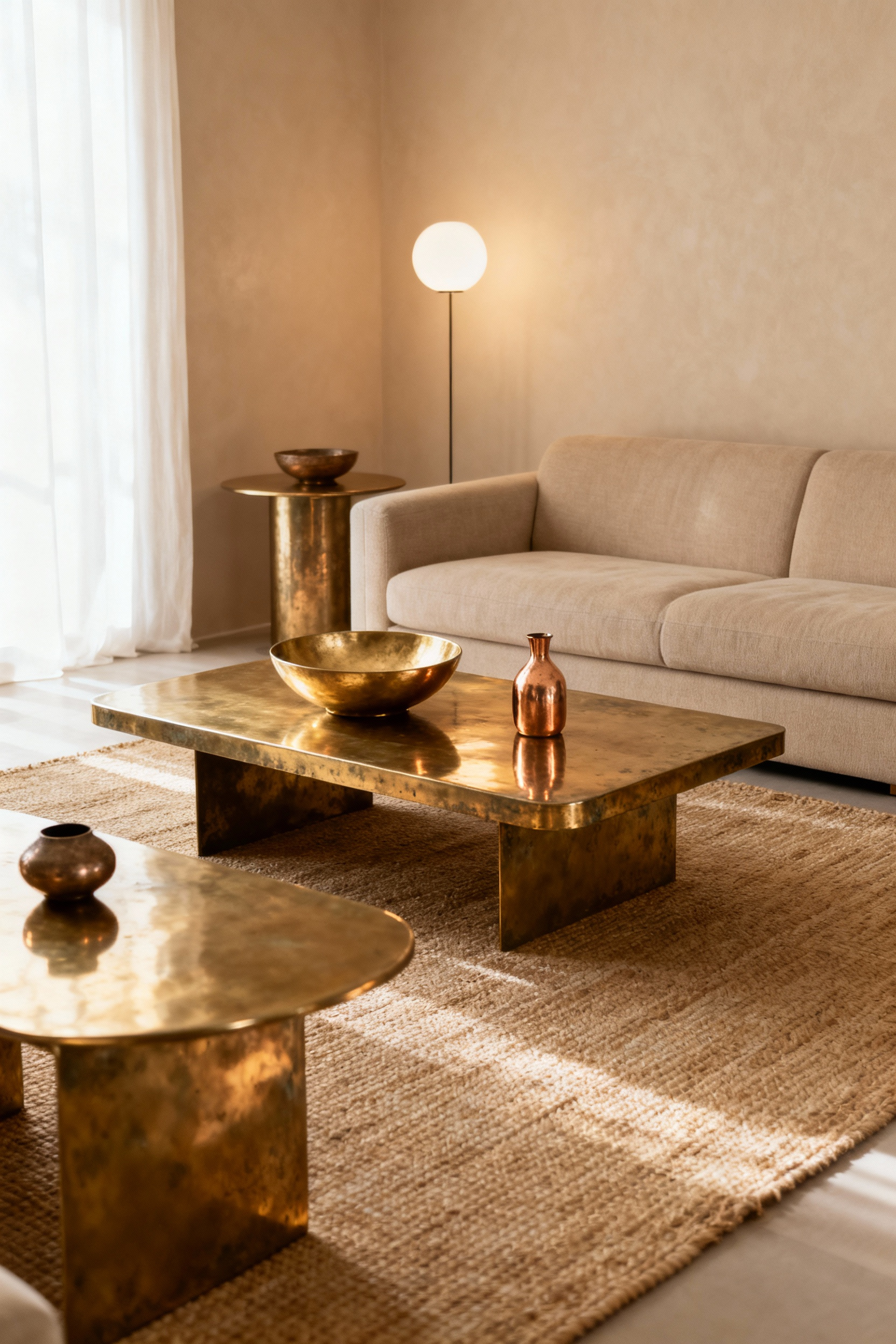
The key is to think of these elements as reflective surfaces. Place a side table with brass legs opposite a window, or position a lamp with a copper base where its light can shimmer, and you’ll see the room come alive. In my practice, I often suggest layering different metallic sheens—a polished finish next to a hammered one—to create a nuanced and dynamic interplay of light. What really resonates with me is how a warm metallic can mimic the soft, flickering light of a candle or a hearth, tapping into an ancient, instinctual feeling of comfort and security. It’s a simple way to make a room feel consistently luminous and welcoming.
11. The Soft Power of Natural Fibers for Acoustic Comfort
Materials like wool, linen, cotton, and jute possess an inherent soft power that extends beyond their tactile appeal—they can beautifully absorb sound, quiet a room, and reduce the jarring effects of ambient noise. Integrating these organic fibers into your living room is a powerful way to enhance acoustic quality, which in turn reduces stress and fosters a sense of grounded tranquility.
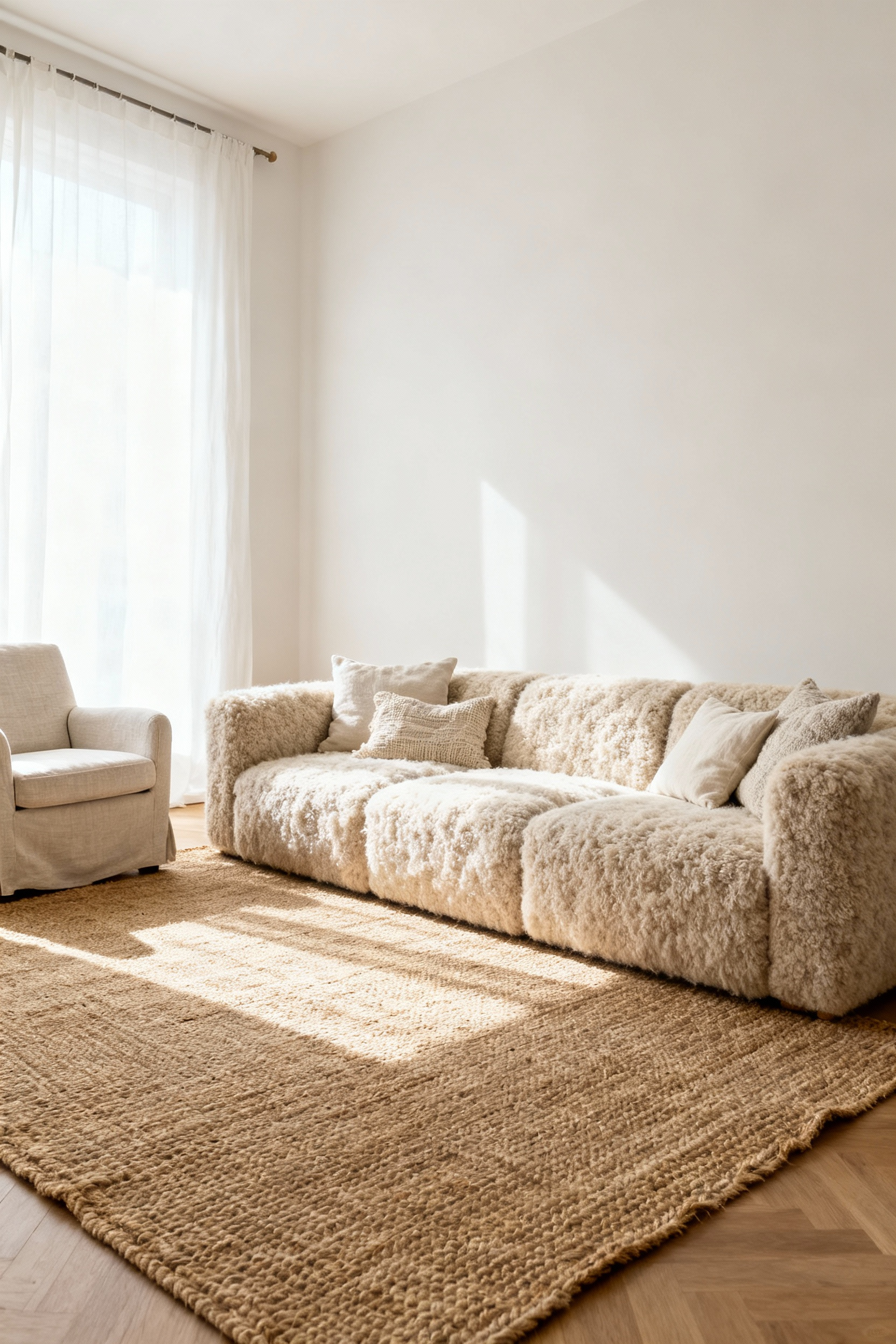
Think of a thick wool rug, heavy linen drapery, or a deeply upholstered sofa. Each of these elements works to soften the sonic environment, making conversation clearer and moments of quiet more profound. From years of professional experience, I’ve noticed that a room’s auditory character is fundamental to how calming it feels. An environment with too many hard, reflective surfaces can feel harsh and unsettling. By contrast, a space layered with natural fibers becomes a gentle acoustic buffer, creating a serene sanctuary that nurtures sensory comfort and allows the mind to truly rest.
Dynamic Arrangements: Sculpting Connection and Flow
How we arrange our furniture is an art form that sculpts the very interactions that happen within a room. This is about more than just a floor plan; it’s about creating dynamic pathways and intentional zones that encourage connection, support contemplation, and enhance the natural flow of life. Here, we explore how thoughtful placement can transform your living room into a responsive and harmonious environment for all who inhabit it.
12. Mastering the Conversational Grid for Deeper Connection
The “conversational grid” is simply the art of arranging furniture to encourage authentic human connection. By creating intimate zones with thoughtful proximity and clear sightlines, we can design a space where genuine conversation feels natural and effortless. This transforms a mere collection of chairs and sofas into a cohesive environment designed for relationship.
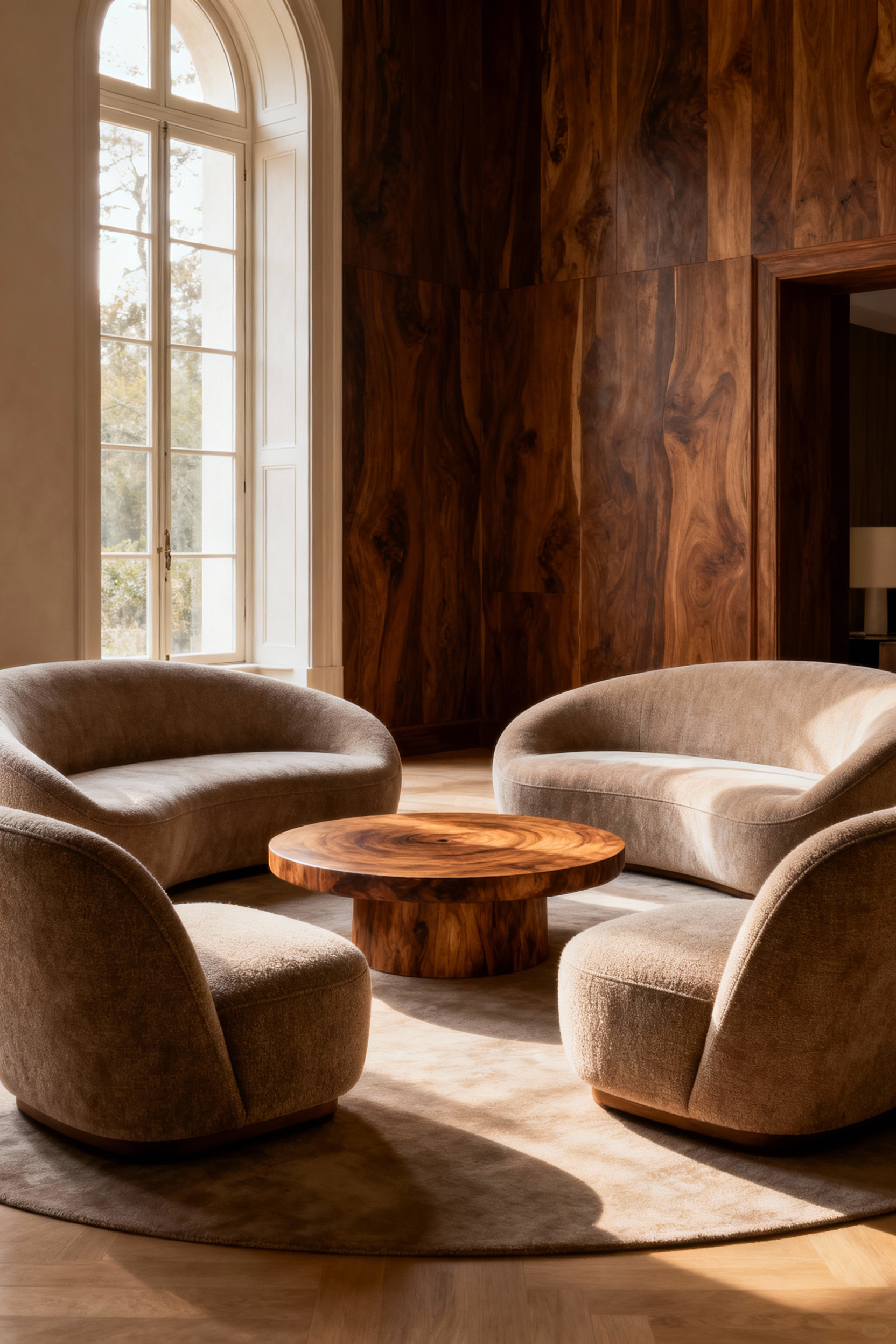
The goal is to foster what designers call ‘sociopetal arrangements’—those that gently draw people together. This often means pulling furniture away from the walls and grouping it in a way that invites interaction, perhaps in a loose circle or U-shape. Chairs should be close enough for conversation without feeling crowded, typically within eight feet of each other. I’ve learned this when observing family dynamics shift after a redesign; angling two chairs slightly toward each other can be the subtle invitation that sparks a meaningful dialogue. By sculpting these spaces for connection, your living room becomes more than just a place to sit; it becomes a place to truly see and hear one another.
Conclusion
The conscious shaping of your living space through this kind of thoughtful living room inspiration is, at its core, a profound act of self-care. It is a commitment to your own well-being. As we’ve explored, every decision—from the gentle curve of a sofa to the grounding weight of a timber table—contributes to the atmosphere of your home and, by extension, the quality of your life. This is about authoring a space that supports you, restores you, and resonates with your deepest values.
By embracing these 12 principles, you are not merely furnishing a room; you are cultivating a sanctuary. You are building an environment that actively soothes your nervous system, nurtures your relationships, and serves as a consistent source of peace. The wisdom of biophilic design, the grace of Wabi-Sabi, and the energy-aware principles of Feng Shui all empower you to create a living room that is a beautiful reflection of a life lived with intention.
I invite you to begin this gentle journey today. Look at your living room with fresh eyes and a quiet heart. Consider which of these ideas speaks to you most deeply, and take one small step to introduce a piece or a practice that feels true. Your home is your sanctuary. Let it be a powerful expression of harmonious living.
